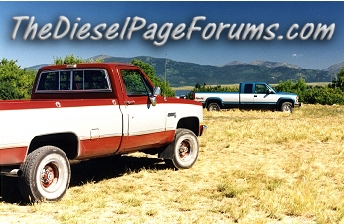

Originally Posted by
robscarab

more boost = more combustion O2 avilable. Add a corresponding amount of additional fuel and you have a more powerful combustion event. Even though the dynamic compression ratio remains the same +/- , the lower height of the 18-1 piston crown creates a larger effective combustion chamber volume, which is now packed with the same density of air/fuel as the smaller area that was provided by the stock piston compression height.
Same DCR + Same A/F Density+ more A/F Volume = bigger bang per power stroke
Nicely said! Although the fuel-air "density" isn't the same, but the fuel-air ratio is - unless as you mentioned, more fuel and more air is introduced. Without more fuel/air, with the larger volume, the density is decreased. The fuel-air mixture has, however, the same energy content, but it will be slightly less efficient than at the higher compression ratio. But this will decrease BMEP (Brake Maximum Effective Pressure) in the cylinders, which reduces piston head pressures and does, in fact contribute to longevity at the cost of a slight decrease in efficiency. With a bit more fuel/air, the power will be nearly the same, but still with less stress on piston crowns and skirts.
Compression ratio is a compromise - higher CR results in higher theoretical efficiency, but at the cost of longevity - and sometimes it's too high, such that decreasing it raises efficiency. Which is why I elected to get my new engine with 18:1 pistons. And fuel economy is up 15% over the original GM 6.5L TD.
'94 Barth 28' Breakaway M/H ("StaRV II") diesel pusher: Spartan chassis, aluminum birdcage construction. Peninsular/AMG 6.5L TD (230HP), 18:1, Phazer, non-wastgated turbo, hi-pop injectors, 4L80E (Sun Coast TC & rebuild, M-H Pan), Dana 80 (M-H Cover), Fluidampr, EGT, trans temp, boost gage. Honda EV-4010 gaso genset, furnace, roof air, stove, microwave/convection, 2-dr. 3-way reefer. KVH R5SL Satellite. Cruises 2, sleeps 4, carries 6, and parties 8 (parties 12 - tested).
Stand-ins are an '02 Cadillac Escalade AWD 6.0L and an '06 Toyota Sienna Limited.






 Reply With Quote
Reply With Quote
 Now, imagine what would happen if you raised CR above stock...
Now, imagine what would happen if you raised CR above stock...







